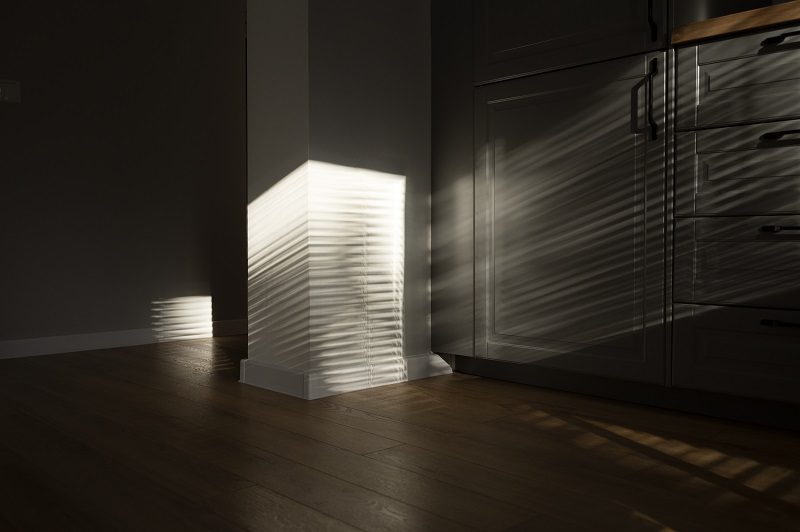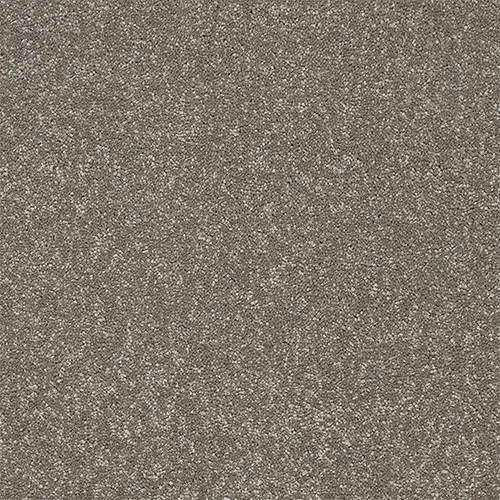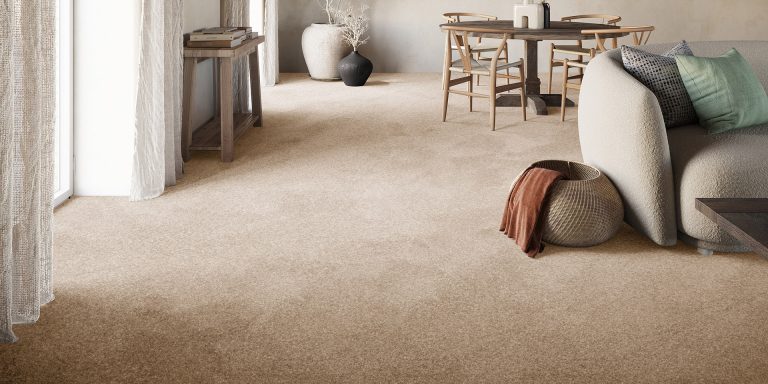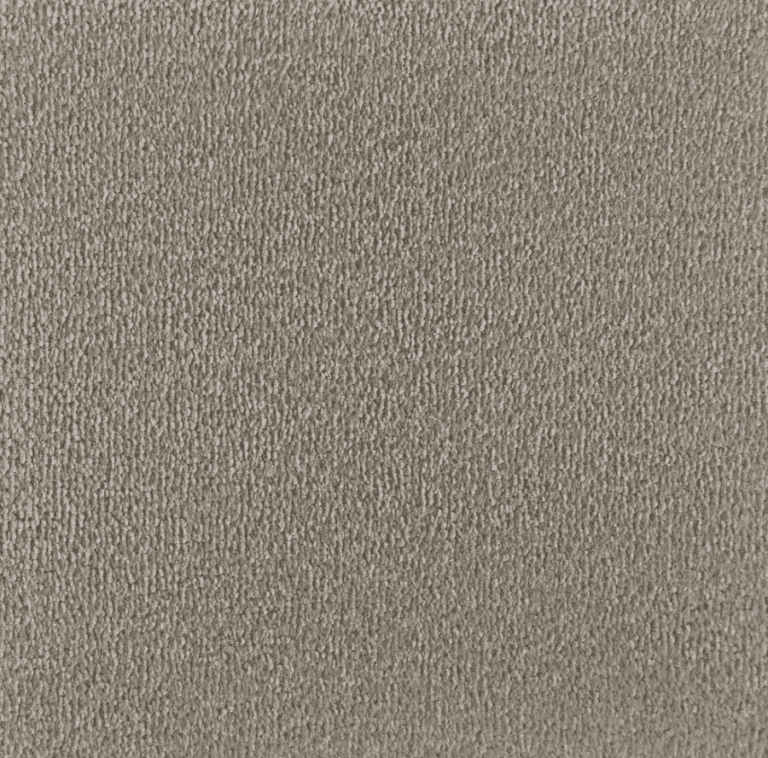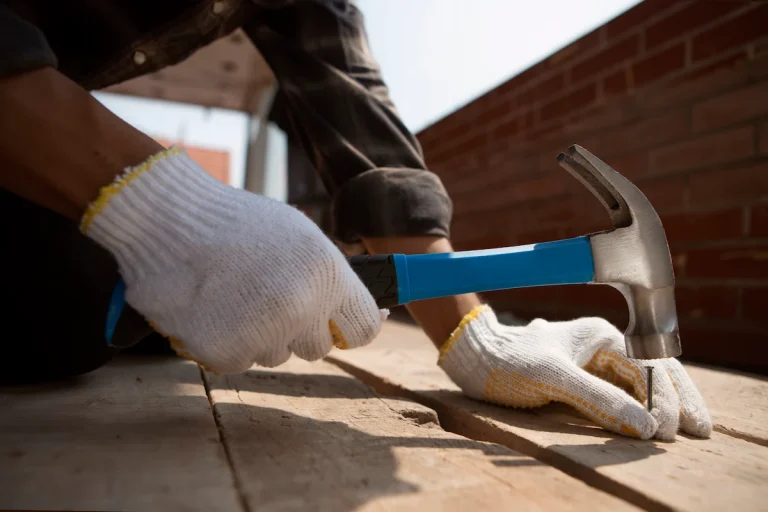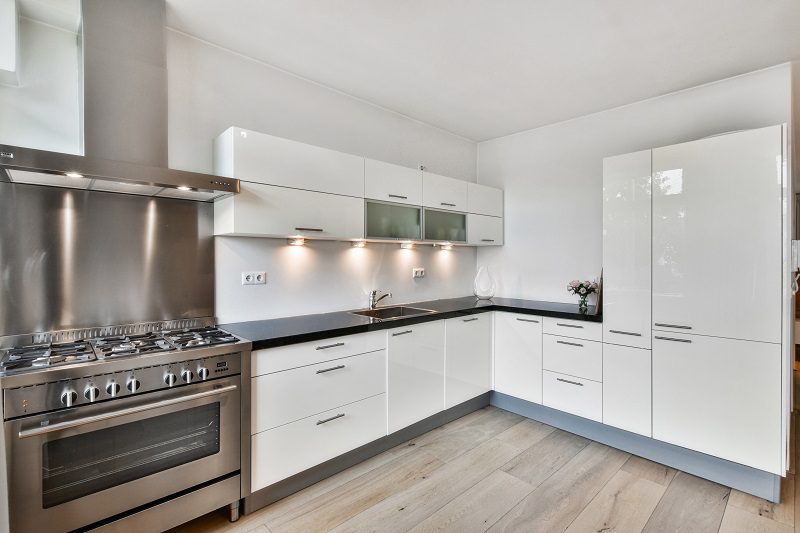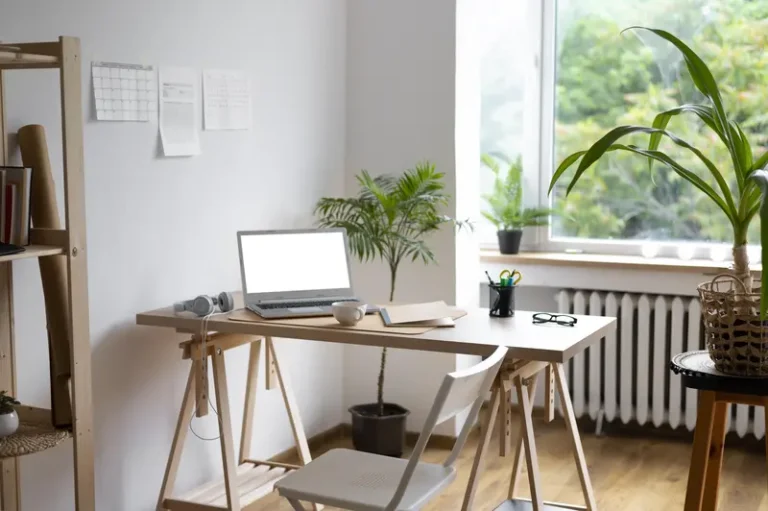Basement floor finishing is a crucial step in transforming a dull, concrete basement into a functional and inviting living space. From carpeting to epoxy flooring, there are various options to choose from when it comes to finishing your basement floor.
We will explore the importance of basement floor finishing, the different types of finishing options available, how to prepare for the process, the steps involved in finishing a basement floor, and the benefits it can bring to your home.
Get ready to elevate your basement with a polished and cosy floor finish!
What Is Basement Floor Finishing?
Basement floor finishing refers to the process of enhancing and beautifying the flooring in the lower storey of a building, typically below ground level. This renovation project aims to transform the basement floor into a more functional and aesthetically pleasing space, providing a foundation for further interior design.
When the basement floor is given attention, it can have a substantial impact on the overall ambience of the space. A well-finished floor can elevate the entire look and feel of the basement, turning it from a mere storage area into a cosy living space or entertainment room. Basement floor finishing helps in creating a sense of continuity and cohesiveness with the rest of the house, tying in the design elements seamlessly.
Why Is Basement Floor Finishing Important?
Basement floor finishing is crucial for homeowners looking to maximise their living space and increase the value of their property. Enhancing the basement floor not only improves the aesthetics of the area but also provides additional insulation and comfort.
A well-finished basement floor can significantly enhance the overall property value, making it a more attractive investment in the eyes of potential buyers. By transforming the basement into a functional living space, homeowners can effectively add usable square footage to their home, which can be utilised for various purposes such as an extra bedroom, home office, entertainment area, or a gym.
A properly finished basement floor can create a more comfortable living environment by regulating the temperature and reducing moisture buildup, leading to a healthier indoor atmosphere. This added livable space not only benefits the current occupants but also increases the versatility and appeal of the property.
The Different Types of Basement Floor Finishing
Basement floor finishing offers various options for homeowners to choose from, including carpeting, laminate, tile, vinyl, and epoxy flooring. Each type of flooring material comes with its unique characteristics and benefits, catering to different preferences and requirements.
a. Carpeting
Carpeting is a popular choice for basement floor finishing due to its warmth, softness, and sound-absorbing properties. It provides a cosy and comfortable feel to the basement space, making it suitable for areas where additional insulation is desired.
Insulation properties are a significant advantage of carpeting in basements, as they help maintain a comfortable temperature by retaining heat.
The maintenance requirements of carpeting are relatively easy, requiring regular vacuuming and occasional professional cleaning to keep it looking fresh.
Moreover, design versatility is another key benefit of carpeting, as it comes in various styles, colours, and textures to match any basement decor and create a customised look.
On the other hand, carpet flooring can be prone to moisture and humidity and might not be the perfect choice for basement use. Basements can be prone to moisture issues, such as dampness or flooding. Carpet flooring can absorb moisture, leading to mould and mildew growth if not properly addressed. It’s essential to ensure that the basement is adequately waterproofed and has proper drainage systems in place before installing carpet.
See product: Cormar Carpet Natural Berber Twist Elite Woodland Mist
b. Laminate Flooring
Laminate flooring is a cost-effective and versatile option for basement floor finishing, offering a wide range of designs and textures. It is known for its easy installation, durability, and resistance to moisture and wear.
One of the key benefits of choosing laminate flooring for your basement is its affordability compared to other flooring options, making it a budget-friendly choice for your renovation project. The variety of styles available in laminate flooring allows you to personalise the basement space according to your taste and design preferences.
The low maintenance requirements of laminate flooring add to its appeal—simple cleaning routines involving sweeping and occasional mopping are usually sufficient to keep it looking fresh and well-maintained.
Laminate flooring’s resistance to moisture makes it an ideal choice for basement environments that are prone to dampness, ensuring longevity and durability even in challenging conditions.
See product: Elka 8mm V-Groove Country Oak
c. Tile Flooring
Tile flooring is a versatile and durable choice for basement floor finishing, offering a wide array of design options and materials such as ceramic, porcelain, or natural stone. It is moisture-resistant, easy to clean, and can withstand heavy foot traffic.
One of the significant advantages of opting for tile flooring in basement finishing projects is its exceptional durability. Tiles are known for their ability to withstand wear and tear, making them ideal for high-traffic areas like basements. Additionally, tile flooring provides great design flexibility, allowing homeowners to create unique looks that suit their style preferences.
The maintenance requirements for tile flooring are relatively low compared to other flooring options. Regular sweeping and occasional mopping are usually sufficient to keep tile floors looking clean and well-maintained. This ease of maintenance is particularly beneficial in basement areas that are prone to moisture and humidity.
d. Vinyl Flooring
Vinyl flooring is a practical and budget-friendly option for basement floor finishing, known for its water resistance, durability, and easy maintenance. It is available in various styles, including planks, tiles, or sheets, offering versatility in design.
One of the key benefits of using linoleum flooring in a basement is its affordability. Compared to traditional flooring options, linoleum is a cost-effective choice that doesn’t compromise on quality. Its water-resistant properties make it an ideal solution for spaces susceptible to moisture, such as basements.
In terms of installation, vinyl flooring offers a straightforward process that can often be done as a DIY project, saving time and money. Its inherent durability ensures long-lasting performance, making it a wise investment for basement renovations.
See product: Cushioned Vinyl – Amor Guimaraes
e. Epoxy Flooring
Epoxy flooring is a durable and low-maintenance solution for basement floors, known for its seamless and glossy finish. It provides excellent resistance to stains, chemicals, and moisture, making it ideal for basement areas that require a high-performance flooring system.
One of the key advantages of epoxy flooring is its versatility in terms of customisation options, allowing homeowners to choose from a wide range of colours, patterns, and finishes to suit their design preferences. Epoxy flooring is highly durable and can withstand heavy foot traffic and impact, making it particularly suitable for basement spaces that may experience wear and tear. Its seamless nature also prevents dust and dirt accumulation, facilitating easy cleaning and maintenance, which is essential for busy household areas.
Basement Floor Preparation
Preparing for basement floor finishing involves several essential steps, including cleaning and inspecting the floor, repairing any damage, levelling the surface, and installing a moisture barrier. These preparatory measures are crucial to ensure a successful and long-lasting basement flooring project.
Begin by thoroughly cleaning the basement floor, and removing any debris, dust, or grease that may prevent proper adhesion of the finishing materials.
Inspect the floor for cracks, holes, or uneven areas that need repair. Use concrete patching compound for smaller imperfections and consider consulting a professional for larger issues.
After repairs, focus on levelling the floor. This can be done using a self-levelling compound that will create a smooth, flat surface for the finishing materials.
Applying a moisture barrier is imperative to prevent any moisture from seeping into the finished floor, which can cause damage and mould growth. Use a high-quality epoxy or sealant for this purpose.
1. Clean and Inspect the Floor
Before beginning the basement floor finishing process, it is essential to thoroughly clean the floor to remove any dirt, dust, or debris. Inspecting the surface for cracks, moisture issues, or structural damage is also imperative to address any underlying issues.
Keeping the basement floor clean not only ensures a better adhesion for the finishing materials but also helps in preventing mould, mildew, or water damage in the long run. A comprehensive cleaning routine may involve sweeping, mopping, and scrubbing the surface. It is crucial to use appropriate cleaning agents that are safe for the specific flooring type.
In terms of inspections, a checklist is handy to track areas that may need repair or treatment. Look out for unevenness, signs of water seepage, or structural weaknesses that could compromise the finishing process.
2. Repair Any Damage
Repairing any damage on the basement floor, such as cracks, uneven surfaces, or water leaks, is crucial to ensure a stable and durable flooring foundation. Addressing these issues promptly can prevent further damage and prolong the lifespan of the finished floor.
3. Level the Floor
Levelling the basement floor is essential for ensuring a smooth and uniform surface for the new flooring material. Uneven floors can lead to installation issues and affect the overall aesthetic and functionality of the finished floor.
One of the primary reasons for levelling the basement floor is to provide a stable base for the new flooring. To achieve an even foundation, it is crucial to start by clearing the space and removing any debris or obstructions.
Next, using a self-levelling compound can help fill in any low spots and create a flat surface. Utilising a long straight edge, such as a level or a screed board, is essential to ensure the floor is even across the entire area.
4. Install a Moisture Barrier
Installing a damp-proof membrane is essential in basement floor finishing to protect the new flooring material from moisture damage and mould growth. This membrane helps to create a dry and stable environment for the finished floor, ensuring its longevity.
There are several types of damp-proof membranes available for basement floor installations, including polyethylene sheeting, epoxy coatings, and rubber membranes. Each type offers varying degrees of protection against moisture ingress. The installation process typically involves ensuring the basement floor is clean, dry, and level before laying down the damp-proof membrane. Proper sealing of joints and edges is essential to prevent any water penetration. By implementing a damp-proof membrane, homeowners can safeguard their investment in the basement flooring and avoid costly repairs due to water damage.
Complete Steps to Finish a Basement Floor
Completing a basement floor finishing project involves several key steps, including laying out the flooring, installing the chosen material, and adding finishing touches to enhance the overall look and functionality of the space. Following a systematic approach is essential for a successful outcome.
When planning your basement floor finishing, take into consideration any moisture issues by ensuring proper waterproofing measures are in place to prevent future damage. Understanding the existing subfloor condition is crucial for determining if any repairs or levelling are required before laying the new flooring.
Next, when selecting the flooring material, opt for options that are suitable for below-ground applications, such as:
- Luxury vinyl plank,
- Tile,
- Or laminate flooring that can withstand potential moisture and temperature variations.
Proceed with precision during the installation process, paying attention to correct underlay, adhesive, or grout application based on the chosen flooring type. Utilising proper tools and techniques ensures a durable and aesthetically pleasing result.
1. Lay Out the Flooring
Before installing the flooring material, it is essential to lay it out in the designated space to ensure proper fitting and alignment. This step allows for adjustments and modifications before the permanent installation.
By laying out the flooring beforehand, you can assess how the material interacts with the room’s dimensions and how it aligns with other design elements. This process also helps in identifying any potential issues or obstacles that might hinder the installation process. Ensuring a smooth and accurate layout can significantly impact the overall aesthetics and functionality of the finished basement.
2. Install the Flooring
Whether you are going to install LVT, tiles or laminate flooring for your basement, the installation process begins with preparing the subfloor. Ensure that the concrete subfloor is clean, dry, level, and free of any moisture issues. Address any cracks or imperfections in the subfloor.
Next, continue with acclimating the flooring and installing underlayment, where necessary. These two steps are particularly important if you are installing laminate flooring. Then you can start installing the flooring by following the manufacturer’s guide. If you are not sure on how to install the flooring by yourself, you can always hire a professional floor fitter to do the job for you.
3. Add Finishing Touches
Adding finishing touches to the basement floor, such as skirting boards, mouldings, or sealants, enhances the overall appearance and functionality of the space. These details provide a polished and cohesive look to the finished flooring.
Skirting boards not only give a seamless transition between walls and the floor but also protect the edges from wear and tear. Mouldings add a decorative element, accentuating the design aesthetic and masking irregularities.
Applying sealants not only boosts the durability of the floor but also safeguards against moisture and potential damage, especially in basement environments susceptible to dampness.
Benefits of Basement Floor Finishing
Basement floor finishing offers numerous benefits, including increased living space, improved aesthetics, enhanced home value, and better insulation. These advantages make basement floor finishing a valuable investment for homeowners.
Expanding the living areas by finishing the basement floor allows families to create additional rooms for various purposes, such as a cosy entertainment zone, a spacious home office, or even a guest bedroom. This transformation not only adds functionality but also contributes to the overall visual appeal of the property, making it more attractive to potential buyers in the future.
Properly finishing the basement floor enhances the insulation of the entire house, providing a more comfortable environment throughout the year and potentially reducing energy costs. This additional insulation benefits homeowners by maintaining a more consistent temperature in the lower levels of the house and improving overall energy efficiency.
a. Increases Living Space
Finishing the basement floor effectively increases the usable living space in a home, providing additional rooms for various purposes such as entertainment areas, home offices, or guest bedrooms. This expansion adds functionality and versatility to the property.
When considering basement floor finishing, it’s essential to think about the overall design aesthetic and how the new space will work together with the existing layout of the home. Elements like lighting, flooring materials, and insulation are crucial in creating a comfortable and inviting environment. By investing in finishing the basement floor, homeowners not only enhance the livability of their property but also potentially increase its market value. The additional square footage can be used for family gatherings, movie nights, or even a private retreat for relaxation.
b. Improves Aesthetics
Enhancing the basement floor improves the overall aesthetics of the space, creating a visually appealing environment that complements the interior design of the home. Selecting the right flooring material and finishes can elevate the basement’s appearance and ambience.
Opting for warm wood flooring can add a touch of cosiness to the basement, making it a welcoming retreat for relaxation. Incorporating area rugs in strategic locations can define different functional areas within the basement, enhancing both style and comfort. Colour schemes such as earth tones or cool blues can convey a sense of tranquillity and sophistication, while textured finishes like matte or gloss can play with light and shadows, adding depth to the overall look. These design choices come together to create a cohesive and visually pleasing basement space.
c. Increases Home Value
Investing in basement floor finishing can significantly increase the overall value of a home, as renovated basements with quality flooring are attractive to potential buyers and add to the property’s resale appeal. A well-finished basement adds equity to the home.
When homeowners opt to finish their basement floors, they not only create additional usable space but also boost the home’s market value. This improvement can yield a high return on investment, often exceeding the initial cost of the renovation. Potential buyers are increasingly drawn to homes with finished basements as they offer versatility and comfort. Renovated spaces often showcase modern design elements, such as waterproof luxury vinyl plank flooring, which appeal to current market trends.
A finished basement with a polished floor can serve multiple purposes, from a cosy family room to a stylish entertainment area or even a guest suite. The versatility of a finished basement adds to its attractiveness, translating into increased buyer interest and potentially quicker sales. By investing in basement floor finishing, homeowners are not only enhancing their living space but also positioning their property for a higher resale value in the competitive real estate market.
d. Provides Insulation
Basement floor finishing also provides additional insulation to the lower level of the home, helping to regulate indoor temperatures and reduce energy costs. Insulated basement floors contribute to a more comfortable and energy-efficient living environment.
By finishing the basement floor with proper insulation materials, you can prevent heat loss through the foundation, which in turn reduces the workload on your heating system. This leads to improved energy efficiency and lower utility bills. In addition, a well-insulated basement floor helps maintain consistent temperatures throughout the house, creating a more pleasant living space. The thermal benefits of a properly insulated floor extend beyond energy savings, providing a more comfortable environment for occupants and protecting the foundation from potential moisture issues.
At TEKA Flooring, we’re here to transform your basement flooring. Whether you’re in search of plush carpets, stylish laminates, or durable vinyl options, our showroom boasts a diverse range of designs to suit your taste.
And when it comes to installation, we’ve got you covered. Our fitting services ensure a seamless and efficient process, guaranteeing maximum satisfaction with your basement floor finishing.
Read also:


























